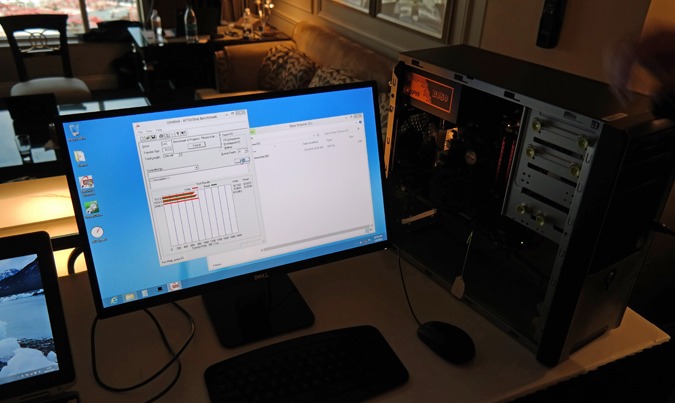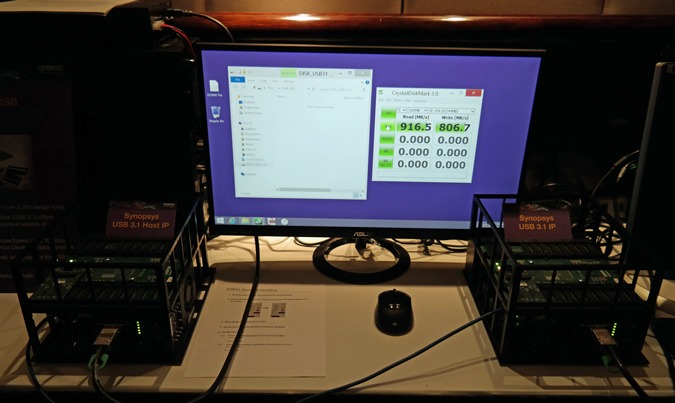Supreme Port: 4 Huge Changes Coming to USB
Ever since the Universal Serial Bus connector standard launched in the late 1990s, the technology has been featured in every PC and almost every connected gadget. From the charging port on your smartphone to the peripheral connections on your PC, USB is everywhere already with 4 billion USB-enabled devices sold in 2013, but like paper clips and staplers, everyone takes it for granted. However, in 2014, the world's most popular wired connection standard will advance in key ways that will make it an even more central part of your digital life. Here are four new USB technologies which will blow your mind in the next 12 months.
Universal USB Laptop Charger
If you want to see the worst case of industry fragmentation possible, look no further than your laptop's power port. Not only does each laptop manufacturer use its own proprietary power connector, but sometimes different models within the same brand have incompatible plugs. Large tablets such as the Microsoft Surface and Galaxy Note 10.1 also use their own custom plugs. However, with the exception of the iPhone, which uses Apple's Lightning connector, all of today's smartphones charge over microUSB.
MORE: 12 Dumbest PC Default Settings (and How to Change Them)
Using a standard connection has a number of advantages for consumers. It allows them to choose from thousands of third-party wires or share wires and adapters amongst their different devices. The European Union even has laws forcing phone makers to provide USB charging, because having a standard connection eliminates a lot of eWaste when people keep their chargers even after they've tossed their old gadgets in a landfill. Unfortunately, traditional USB ports do not provide anywhere near the 45 to 65 watts most laptops require.
Enter USB Power Delivery, a new standard which provides a strong 100 watts of power, along with a speedy USB data connection over a single wire. In a demo at CES 2014, USB Implementers Forum CEO Jeff Ravencraft showed us a Dell laptop that had been modified to accept USB PD instead of its proprietary power connector. A USB wire ran from the laptop's USB PD port to a specially-modified Targus docking station, which connected to an HD monitor. As we watched, the docking station sent power to the laptop while receiving a 1080p video stream back from it, over the same wire.
Today, if you buy an external laptop charger, charging dock or AC adapter from a third party, you have to make sure it comes with the right connector for your model of laptop, which is a nightmare both for accessory makers and consumers. USB PD will not only enable a new generation of smart docks and monitors that work with everything, but will also allow you to share your AC adapters between laptops. The first laptops that support USB PD will arrive later this year.
MORE: 10 Laptops with the Longest Battery Life
Sign up to receive The Snapshot, a free special dispatch from Laptop Mag, in your inbox.
Who Needs Thunderbolt? Superspeed USB 3.1
USB 3.0, the current standard, tops out at 5 Gbps in theory but takes more than a 20 percent hit due to overhead and other inefficiencies, putting it squarely in the 400 to 500 MBps range, a bit slower than the fastest SSDs. However, the new USB 3.1 standard eliminates most of the overhead and raises the throughput to 10 Gbps, faster than the fastest SSD around. With that kind of bandwidth, an external storage drive could be as fast as the one inside your PC.
At CES, the USB-IF showed us a demo of USB 3.1 using a RAM disk on an internal card and achieving read and write speeds well over 1 GB per second. A second demo, with two desktops linked together by an old USB 3 cable and new--but not final USB 3.1 controllers--got read and write speeds over 900 MBps.
For years, we've been hearing about how Intel's Thunderbolt connection standard would harm USB, because it offers 10 Gbps in its original form, which is going up to 20 Gbps in Thunderbolt 2.0. While there are some Thunderbolt peripherals on the market, Intel's connection is really the next coming of FireWire, a niche connector that's limited to a handful of products used by creative professionals. USB 3.1 will bring high speed and high-power connections to the masses.
Reversible USB C Plug for Phones and Tablets
If you've ever fumbled around trying to plug a USB connector in the wrong way, a new advancement will change your life. Late last year, the USB-IF announced the development of the USB C connector, which you'll be able to plug in either right side up or upside down. In addition to is reversibility, the USB C plug will be about the size of the current microUSB plugs and be capable of carrying USB 3.1-speed data.
Though the USB-IF hasn't even released a concept drawing of the plug yet, Chairman Brad Saunders told us that his organization will show a sample this spring. He told us that there's so much enthusiasm in the industry for this new plug that we could see mainstream adoption start even by the end of this year.
MORE: 8 Worst Windows 8 Annoyances and How to Fix Them
4K Video Over USB
At CES, DisplayLink unveiled its new DL-5500 chipset, which is capable of delivering video at resolutions up to 3840 x 2160 over a single USB 3 connection. DisplayLink has long enabled users to connect to full HD monitors over USB and some docks even allow you to drive two displays at once. However, this new chipset is truly a breakthrough because it means that you can output to today's best large screen TVs and monitors from your PC through your current USB connection.
We can't wait to see docks and adapters based on the DisplayLink DL-5500 chipset, but monitors with this technology will be even more exciting. Late last year we saw the first 1080p portable monitor in the ASUS MB168B+. We can only assume that 4K screens that fit in your laptop bag will arrive in the near future.




